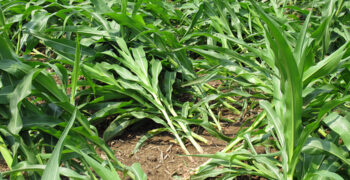Background:
Seed corn maggots are known to be an early-season pest of corn. It is also common in fields that have manure applied to them and fields with reduced tillage and decaying residue. These maggots are yellowish-white and found trying to burrow into the corn seed. Adult maggots will have no legs, and will be about a quarter of an inch long. They are narrow, cylindrical and tapered. They have tiny black mouths containing hooks in the front and do not have heads.
Scouting and Damage:
Scouting is usually initiated when poor stands and emergence has been noted. Be sure to dig up the seed to make sure that maggot damage is present before diagnosing it. The maggot destroys the germ by working its way into seed and feeding on it. The seed simply cannot produce and germinate and leave gaps in the soil. If an infested seed somehow germinates, the seedling will be very weak and will die. Note that any heavily manured field is very attractive to egg-laying flies during the spring.
Time of Attack:
Seed corn maggots attack from planting until mid June — VE-V4.
Management:
No rescue option is available for seed corn maggots besides replanting. Determine if replant is needed by evaluating the remaining population of healthy plants and yield expectation. Seed treatment is recommended if replant is going to be done before June.



